Character action games are few and far between these days. Though the action genre was built on the backs of industry icons like Dante, Ryu Hayabusa, and Bayonetta, you’d be hard-pressed to find many studios that focus on frenzied action experiences with a charismatic lead lying at the core of it all. While it isn’t strictly classifiable as one, SHIFT UP’s Stellar Blade still feels like a game ripped straight from that era of gaming.
Between an eye-catchingly stylised protagonist, a focus on flashy and execution-heavy combat, and a deliciously old-school approach to level design, Stellar Blade often feels like a crystallised summation of pre-2010s gaming. Though that isn’t to say Stellar Blade is lacking modern sensibilities. It wears its inspirations on its sleeve, borrowing heavily from the sombre hopelessness of NieR: Automata’s post-apocalypse as well as the kinetic clashing of steel you can find in Sekiro: Shadows Die Twice. While they way Stellar Blade riffs on these titles reaches varying degrees of success, the overall experience is undeniably great.

If you’ve played Stellar Blade’s demo, you already know that the game gets off to a rip-roaring start. Players step into the shoes of Eve, a member of an elite force built to eradicate the monstrous Naytibas from a now-desolate Earth. The dispatch of Eve’s squad from an off-world colony goes horribly wrong, leaving her as a sole survivor with a renewed hatred for the Naytiba. Shortly after meeting with a survivor named Adam, the pair set out to aid humanity’s last surviving city, Xion, while furthering Eve’s own mission to wipe out the Naytibas.
It takes more than a few cues from Yoko Taro’s own NieR: Automata, and can feel a bit predictable as a result. While there’s some initial mystery surrounding the origin of the Naytibas and the hold that the seraphic Mother Sphere has over what’s left of humanity, Stellar Blade shows its hand too early for its major story twists to have much impact. It’s laid on pretty thick at certain points in the story, but doesn’t play with your expectations or dissect themes in the way Automata does.

Despite this, the world SHIFT UP have created here is incredibly well-realised. Right from Stellar Blade’s opening hours, it feels like Earth is fighting a battle it’s already lost. Cities are abandoned, decrepit, and overrun with Naytibas, vast wastelands and deserts are near-devoid of life, and futuristic cities paint a picture of a utopian society brought to its knees in an instant. Nowhere is this feeling more prominent then in Xion itself, where the remnants of humanity struggle with the Naytibas and their faith in the Mother Sphere.
Propaganda claiming that the Mother Sphere is a false icon litters the streets of Xion, Angels like Eve are treated with reverence or dismay – there’s no in-between. This is a miserable and hopeless world. In a way, Eve’s relative naivety serves as a sort of stand-in for the player. She’s exposed to the horrors of this world as we are, making powerful moments of realisation that most fates in this world end cruelly. This widespread suffering also serves to highlight Stellar Blade’s sporadic moments of triumph and hope, a reminder that maybe one day, things will be okay.
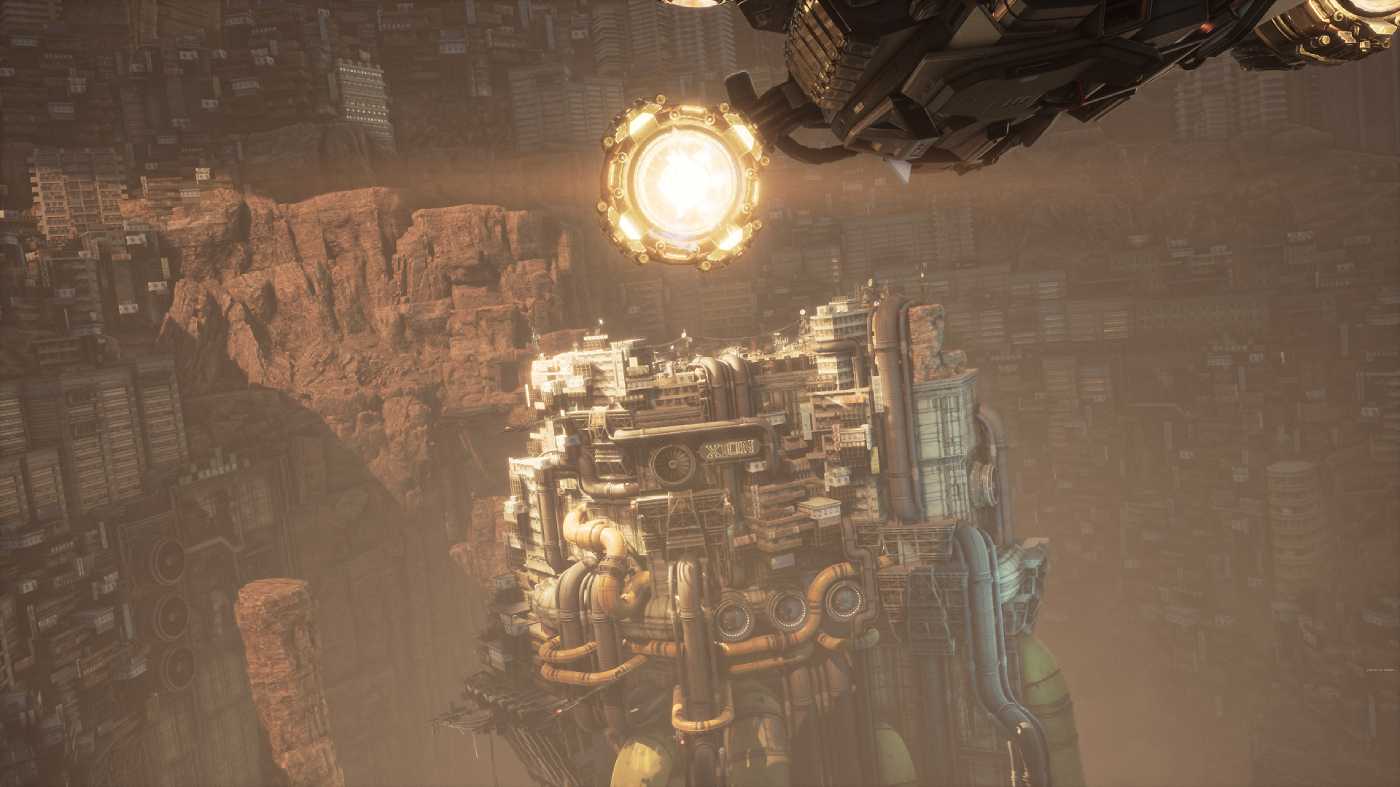
When it comes to Eve herself, I suspect that she’ll be quite different from what most expect. Aside from an absolutely killer design, she isn’t positioned as a femme fatale akin to Bayonetta. Eve, like us, is new to this conflict. In this sense, she’s closer to NieR: Automata’s 2B, wanting to understand how the Naytibas impact humanity, Xion, and help them where she can. It helps her to grow and become more independent over the course of the game, able to make her own decisions without the guidance of the Mother Sphere by the end of the game.
If you were surprised by my earlier comparisons to Sekiro: Shadows Die Twice, it’s easy to understand why. It’s clear Stellar Blade’s combat is somewhat inspired by other character action games, but it straddles a line between flashy juggle combos and the more considered swordplay of FROMSOFTWARE’s 2019 darling. Parrying enemy strikes and knocking them off balance is the clear focus here, incentivising you to play defensively until an opportunity presents itself for Eve to unleash all manner of carnage against her enemies.

It’s hard to make parrying feel satisfying in games when it’s a regular part of every combat interaction. Much like Sekiro, though, Stellar Blade’s combat has an immensely satisfying game feel that never lets up. Sparks fly as Eve’s sword collides with the chitinous limbs of the Naytibas, which is in stark contrast with how easily the rest of their bodies are torn to pieces when an opening presents itself. You’ll quickly learn that throwing out combos is a surefire way to get hit, but getting into the rhythm of reading enemy patterns to knock them off balance quickly feels natural.
If you do find yourself in a pinch, Eve has a few other options you can throw in the mix to get the upper-hand. Burst Skills are what you’ll be using most, which are powerful skills you can throw out or tack onto the end of your combos for some bonus damage. These can only be used if Eve has enough Burst Energy, so you can’t just abuse them when things get hairy. Burst Energy is only replenished through successful defensive maneuvers, which further encourages you to go for those perfect parries and perfect dodges.

You’ll also get the ability to use Adam’s drone as a ranged weapon fairly early on, which is particularly handy for locking down some of the more agile Naytibas. There’s even a few gun-only sections, where Eve is locked out of using her sword. While this sounds counterintuitive to the kind of experience Stellar Blade is, these are ridiculously cathartic and provide a nice break from all the hacking and slashing you’ll be doing. There are a couple of other elements introduced to combat throughout the game, but it’d be a shame to spoil them here, both narratively and in the way they shake up the flow of combat.
THE BEST SHIPPED DEAL IS AT AMAZON FOR $109 WITH FREE RELEASE DAY DELIVERY
While there’s plenty of enemy variety on show here, Stellar Blade’s combat excels most in its myriad boss fights. You’ll often feel outclassed at first – put up against Naytibas that trounce Eve in size and sheer physical force. You can get into a real flow-state with some of the more challenging ones, as you desperately parry, dodge, Blink, and Repulse your way out of danger to launch your own assaults. Proper play culminates in staggering your enemy, opening them up for a flashy Retribution attack which never get old.
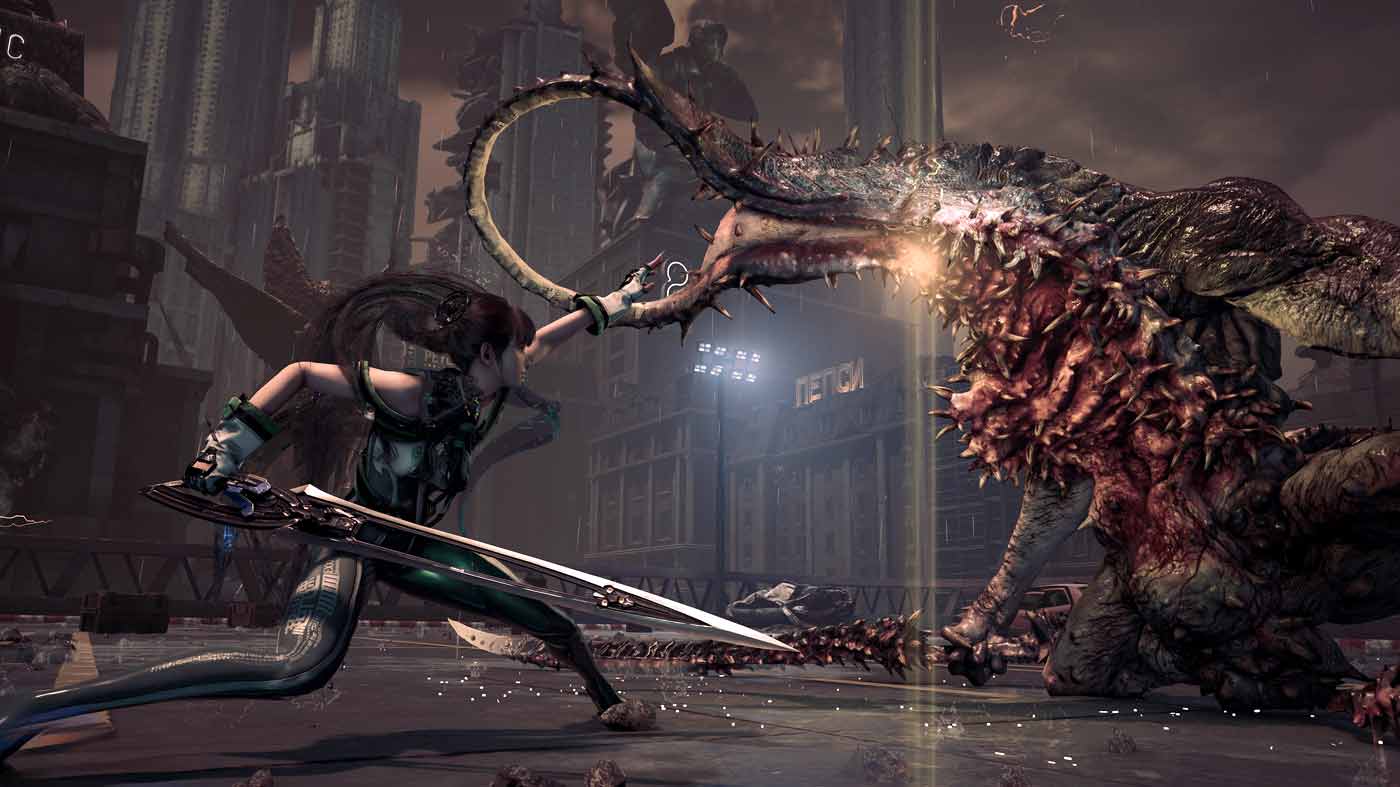
Instead of adopting a full open-world design, Stellar Blade opts to focus on separate, smaller locales that can be explored independently. These vary wildly in size and linearity. The Wasteland and the Great Desert, for example, are vast, wide open spaces with plenty of secrets to uncover and requests to complete. Areas like Eidos VII, though, are more linear affairs with occasional opportunity for exploration. It’s a diverse mix of locales, each one offering something different from a visual and design perspective.
You’ll undoubtedly spend most of your time in the larger areas, especially the Wasteland. As it’s connected to Xion directly, many requests you can pick up from the city’s people will take you out into the Naytiba-ridden area. There’s a lot to engage with in these spaces outside of main story progression. You can find Cores to upgrade Eve’s total health and Burst Energy capacity, new outfits, accessories, Gear, Exo-Spines, and crafting materials.
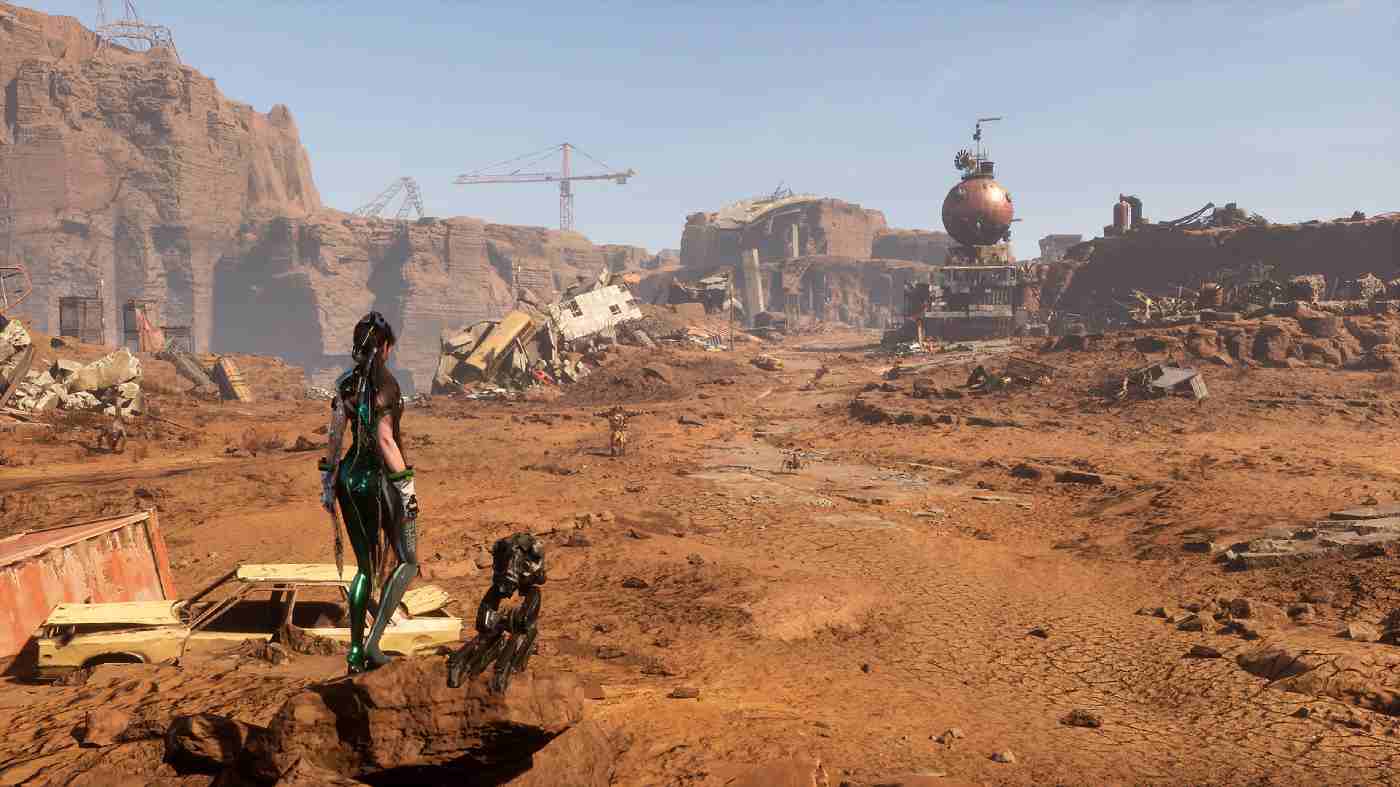
You’ll often need to overcome platforming or combat challenges to reach these rewards, the latter of which is always a blast, the former – not so much. Platforming in Stellar Blade feels quite janky, especially when it requires more precision from the player. While Eve controls like a dream in combat, she simultaneously feels floaty and heavy. Movement often feels jerky which makes it hard to line up jumps in the moment, and it lacks a general consistency that makes it more frustrating than it is fun.
Even though I had irks with traversal, I still found myself exploring these environments and completing requests. Mostly because the side content here really does a lot of heavy lifting when it comes to Stellar Blade’s worldbuilding. I mentioned it earlier, but the way in which the hopelessness and total despair of the situation is conveyed through NPCs and the general happenings of Xion and its surroundings is so engaging.

They almost always boil down to the same stuff when it comes to what you’re actually doing, but they all tell unique stories. An early example is an android, Enya, who’s fallen into disrepair, unable to perform for the bar’s patrons like she used to, much to the dismay of her closest friend. You can go out to get the gear to help repair Enya, leading to a chain of side quests following the two that concludes in a rewarding and heartfelt manner. It’s a rare example of one of the more hopeful beats in Stellar Blade, but it’s one that’ll stick with me for some time.
Another highlight was a relatively late quest where an anonymous tip is given to Eve about a store in the sunken district of Eidos VII. You can gain access to the building with a provided code to drain all the flooding, revealing a room full of deceased humans. It serves an unspoken narrative purpose, implying that the flooding was intentional on behalf of whoever is responsible for the murders – likely the same person who gave Eve the anonymous tip. The game is just packed with this stuff, all of it helping to build an image of what Xion is truly like and how those who live there go about their lives.
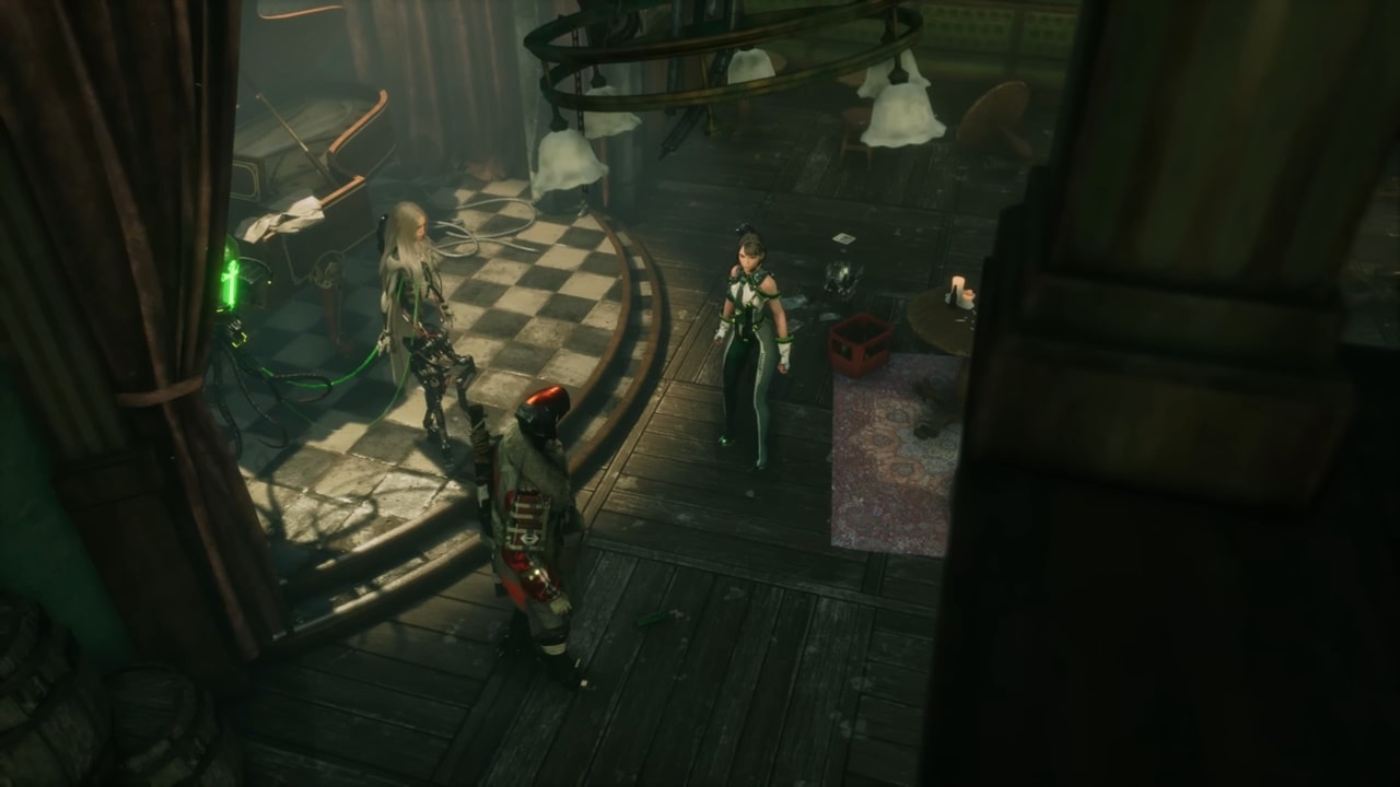
This side content regularly contributes to Eve’s progression as well. This is split into a few different facets, some of which are simple attack and health boosts, while others are more customisable. Exo-Spines, for example, are equippable spines that Eve can use to lean into a playstyle. Where one might focus on dealing extra critical strike damage, another focuses on managing Burst Energy. Gears also play into this, which further modify Eve’s stats and capabilities. It adds a touch of flexibility in how you approach combat and accommodate your weaknesses or strengths.
Another area that really serves to help the worldbuilding and overall aesthetic of Stellar Blade, is its visual style. This is a hauntingly beautiful game, brought to life by countless inspired designs and a striking visual exploration of religious iconography and interpretations. The Naytibas echo similar design elements found in Bayonetta’s biblically accurate angels, only far more fleshy and monstrous in their overall presentation. They’re juxtaposed by the slick, sci-fi, futuristic designs of Eve and the surviving humans. It’s incredibly inspired and striking regardless of the visual preset you play on.
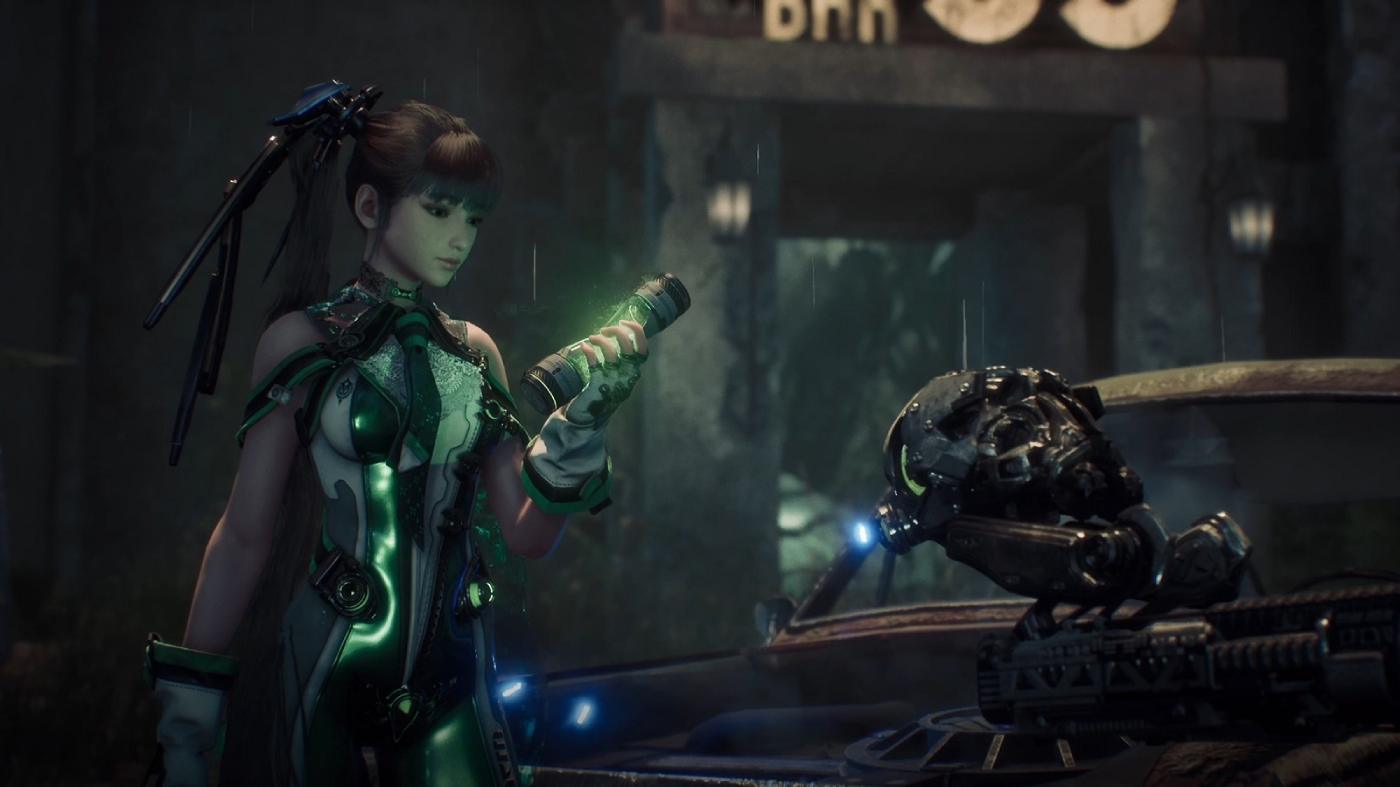
I’d also be remiss if I didn’t mention Stellar Blade’s sublime soundtrack. While just over half of it was composed in-house, the rest was led by Keiichi Okabe of NieR Replicant and Automata fame. His signature style from those titles translates flawlessly here – mesmerising vocals punctuate soft overworld themes that lend a dream-like quality to the world and exploration. SHIFT UP’s own tracks also deliver, with some great high octane tunes that score the game’s myriad set-pieces.
At a glance, it’s easy to write off Stellar Blade’s key inspirations as surface level and imitative. While a few 0f these elements don’t live up to the titles they’re borrowed from, Stellar Blade more than makes up for it so many other ways. It’s a fantastic example of combining tried and true elements to create something that’s new in its totality. Its commitment to the vision of its world coupled with the kind of gameplay we just don’t see enough of these days makes for a stellar experience all-round.




